
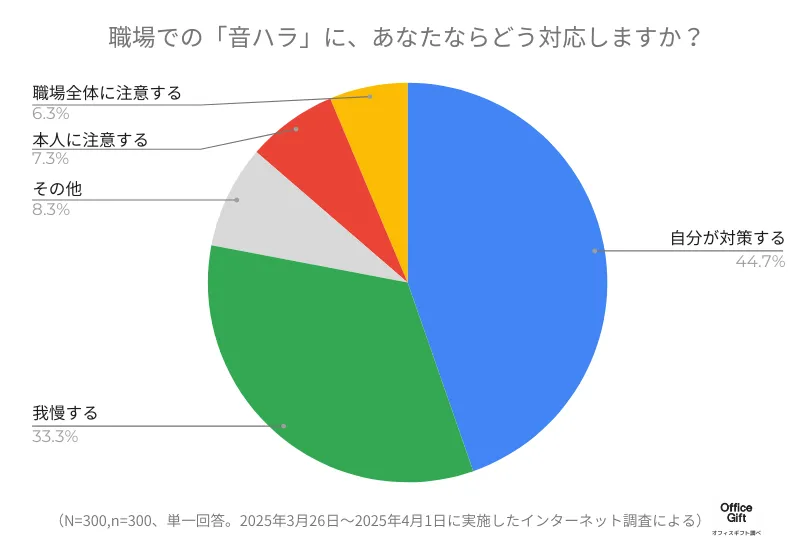
Exploring Sound Harassment in the Workplace: Is Noise Stress Affecting You?
Unveiling the Silent Stress of Office Sounds
In a recent survey conducted by Webgift Inc. through their platform Office Gift, an astonishing 98% of respondents claimed they experience stress from sounds in their work environment. The term 'sound harassment', or '音ハラ' in Japanese, has emerged as a troubling issue in modern workplaces, bringing to light how ambient noise can significantly impact mental health and productivity. This article seeks to uncover the types of sounds that are most bothersome and how they affect employees.
What is Sound Harassment?
Sound harassment, much like its more recognized counterparts such as sexual harassment or power harassment, refers to the uncomfortable or distressing sounds that can create an unpleasant work atmosphere. Everyday noises, which might be unnoticed by some, can evoke significant anxiety or frustration in others. Our survey, conducted from March 26 to April 1, 2025, gathered insights from 300 office workers, revealing a striking list of sounds that contribute to workplace stress.
The Most Stressful Sounds: Ranking Employee Anxiety
Curious what these sounds are? Let’s explore the results of the survey regarding the most bothersome noises at work:
1. Sighs and Clicks (162 Votes)
Employees frequently reported that the sounds of sighs and tongue-clicking, particularly when made by superiors, heightened their anxiety. Comments indicated that such noises could create a tense atmosphere, leaving individuals to question their performance.
2. Chit-Chat (112 Votes)
While casual conversation can foster camaraderie, excessive chit-chat proved to be a distraction. Many voiced their struggles to focus when the sounds of laughter or prolonged discussions seeped into their workspace. People expressed frustration about being pulled into conversations they wanted to avoid, hindering their work.
3. Typing (102 Votes)
The sound of fingers tapping away at a keyboard received significant backlash, with many workers expressing concern that it disrupted their focus. Loud typing sounds can be especially challenging when trying to maintain concentration, leading to a sense of frustration and, in certain cases, fear.
4. Slamming Drawers and Doors
Many employees find the abrupt noise from slamming drawers or doors particularly jarring. The impact of such actions can linger in the air, adversely affecting the work environment.
5. Whispers and Humphrums
The presence of people muttering or humming to themselves can also be a source of annoyance. Employees described situations where they were uncertain if they were being addressed, causing unnecessary stress.
6. Sniffling and Sneezing
While certain sounds like sniffling or sneezing are understood to be involuntary, they can still elicit complaints. Workers expressed irritation over repeated sniffling noises, often indicating a lack of regard for the shared workspace.
7. Chewing Noises
Lastly, noisy eaters or those who chew with their mouths open drove many professionals to the brink of distraction. With open-plan offices becoming more common, it’s difficult to escape from these frustrating sounds, leading to substantially lower workplace satisfaction.
The Consequences of Sound Harassment
The survey results also highlighted the detrimental effects of sound harassment. A notable 215 respondents indicated they felt increased stress due to these disturbances. Additionally, many reported difficulty concentrating at work due to nearby distractions.
Assessing Responsibility for Sound Harassment
When questioned on how to handle sound harassment, the responses were varied. About 45% of participants indicated they preferred to take measures themselves to mitigate the noise, while 33% opted to tolerate it. This speaks to a reluctance to confront coworkers directly about their noise levels, highlighting the need for collective awareness and sensitivity regarding workplace sounds.
Prioritizing a Harmonious Workspace
Creating a comfortable work environment goes beyond simply minimizing sound; it's about fostering an attitude of awareness and respect among colleagues. Businesses should encourage practices that emphasize the understanding of how sounds affect others, facilitating an atmosphere where open communication can thrive. As each individual’s tolerance for sound varies, striving for a considerate culture in the workplace can lead to enhanced productivity and improved relational dynamics among coworkers.
Conclusion
In conclusion, sound harassment is a prevalent issue that affects nearly all office workers, with the survey indicating widespread awareness of the problem. Companies should strive to combat sound harassment through awareness programs and effective communication strategies to create a healthier work environment. By promoting respect for shared spaces and considerate behavior, work productivity can flourish alongside employee wellbeing.
(This article is reviewed by Gift Concierge Hitoshi Tomita of Webgift Inc., dedicated to fostering positive workplace experiences.)
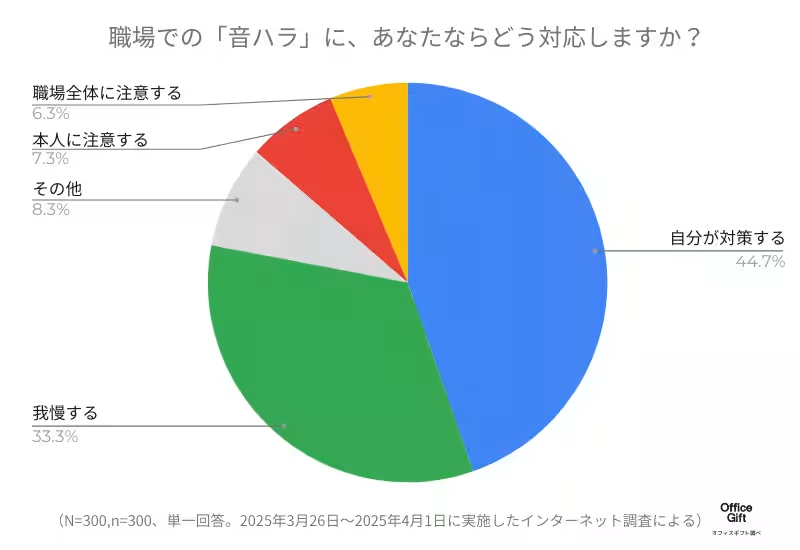
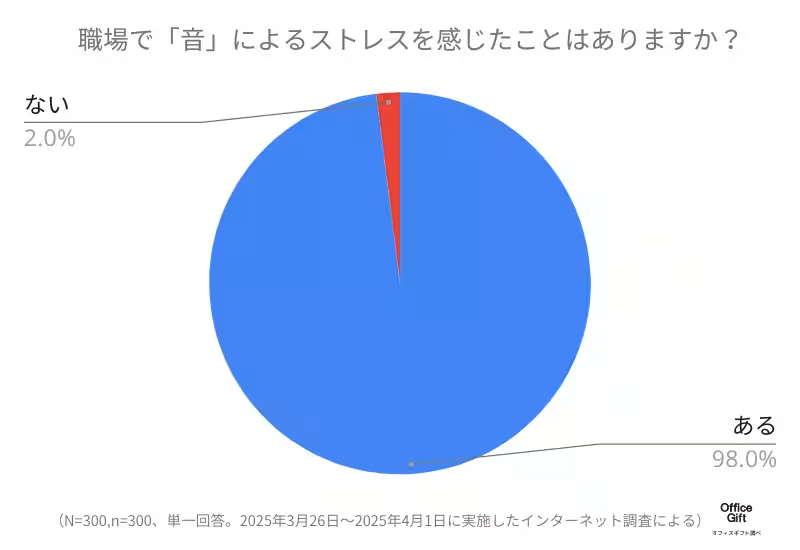
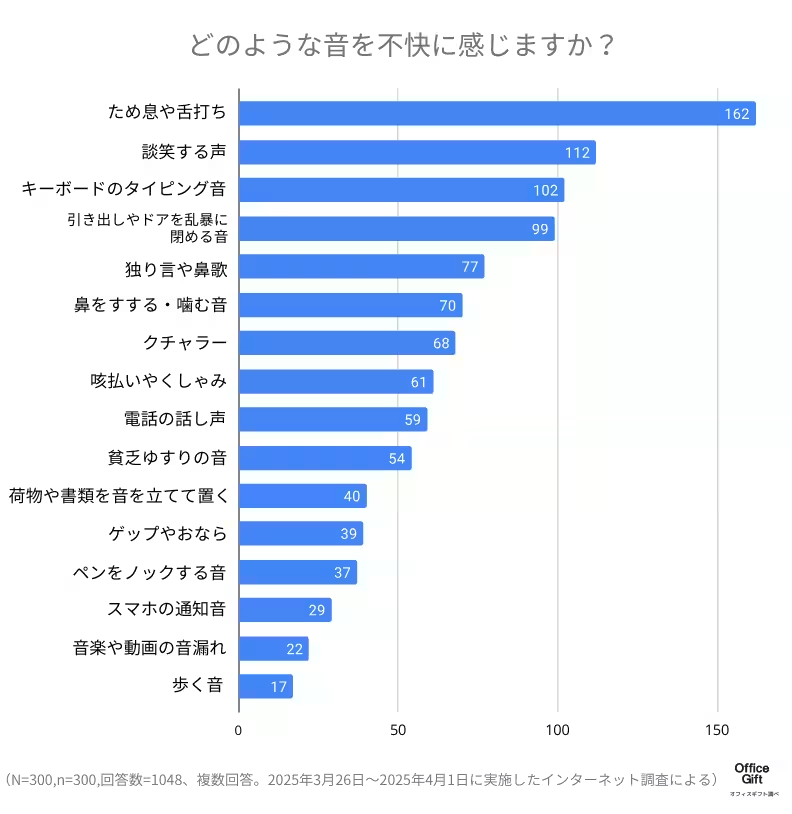

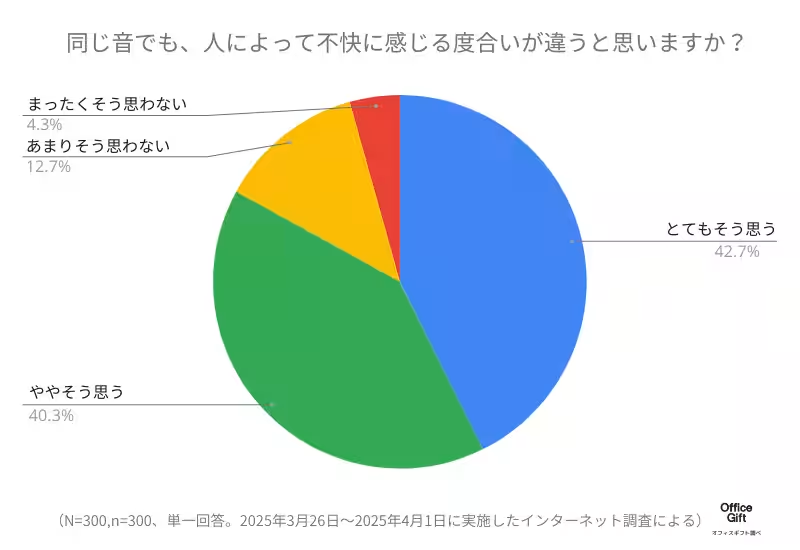


Topics People & Culture)










【About Using Articles】
You can freely use the title and article content by linking to the page where the article is posted.
※ Images cannot be used.
【About Links】
Links are free to use.